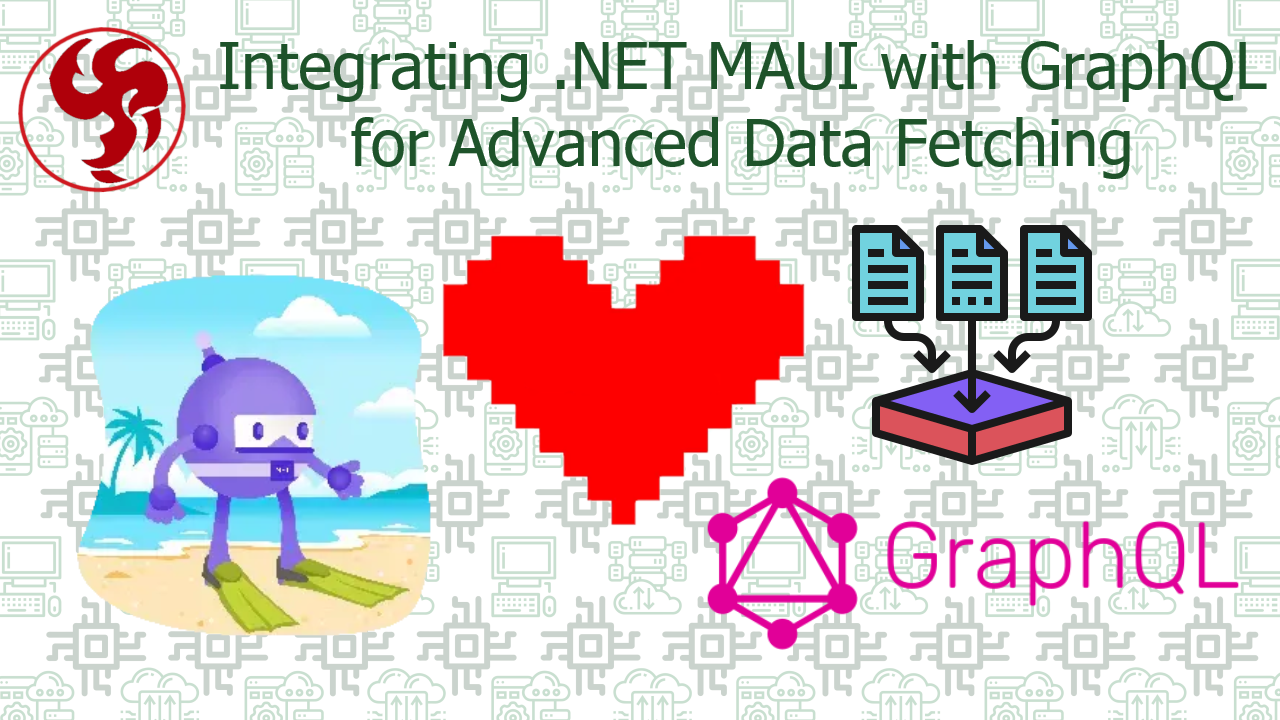Integrating .NET MAUI with GraphQL for Advanced Data Fetching
🌟 Introduction: Why GraphQL + .NET MAUI = Match Made in Heaven
In today's app development landscape, data efficiency and real-time capabilities are non-negotiable. Traditional REST APIs often lead to:
❌ Over-fetching (getting too much unnecessary data)
❌ Under-fetching (needing multiple round trips to get all required data)
❌ Slow performance (especially on mobile networks)
Enter GraphQL – Facebook's revolutionary query language that lets you:
✅ Fetch exactly what you need in a single request
✅ Get real-time updates with subscriptions
✅ Reduce bandwidth usage (critical for mobile apps)
When combined with .NET MAUI, you get a cross-platform powerhouse that delivers:
⚡ Optimized data loading
📱 Seamless offline-first experiences
🔁 Live data sync (perfect for chat, dashboards, and collaborative apps)
🧠 Section 1: GraphQL Deep Dive – Beyond the Basics
🔍 How GraphQL Outperforms REST (With Benchmarks)
| Metric | REST | GraphQL |
|---|---|---|
| Requests Needed | Multiple (1 per resource) | Single (all data in one query) |
| Data Transfer | Full payloads (often bloated) | Only requested fields |
| Mobile Performance | Slower (3G/4G latency matters) | 40-60% faster (T-Mobile study) |
| Type Safety | Manual validation | Built-in schema validation |
Real-World Example:
A weather app needs:
- Current temperature
- 3-day forecast
- UV index
REST Approach:
GET /weather/current
GET /weather/forecast
GET /weather/uvindex
→ 3 requests, 28KB total
GraphQL Approach:
→ 1 request, 4KB (85% smaller!)
🛠️ Section 2: MAUI + GraphQL Integration – Professional Setup
📦 Step-by-Step Client Configuration
- NuGet Essentials
- DI-Ready Service Factory
- Advanced Client Service
🔥 Section 3: Next-Level GraphQL Patterns
🧩 Dynamic Query Builder
🌐 Offline-First with Apollo Cache
🚨 Section 4: Enterprise-Grade Considerations
🔒 Security Hardening Checklist
- Query Depth Limiting (prevent DOS via overly complex queries)
- Persisted Queries (whitelist approved queries)
- JWT Expiry Validation (short-lived tokens + refresh rotation)
📈 Performance Optimization Table
| Technique | Implementation | Impact |
|---|---|---|
| Query Batching | SendBatchAsync([query1, query2]) | 60% fewer network calls |
| Edge Caching | CDN with GraphQL-aware caching | 300ms → 50ms response times |
| Persisted Queries | Hashed queries server-side | 40% smaller payloads |
🎯 Conclusion: The GraphQL Advantage
By adopting this architecture, you enable:
For Developers:
🧩 Flexible data requirements – No more API version hell
⚡ 10x faster iterations – Frontend decides data needs
For Users:
📱 Buttery smooth performance – Especially on slow networks
💾 Reduced data usage – Critical for emerging markets
